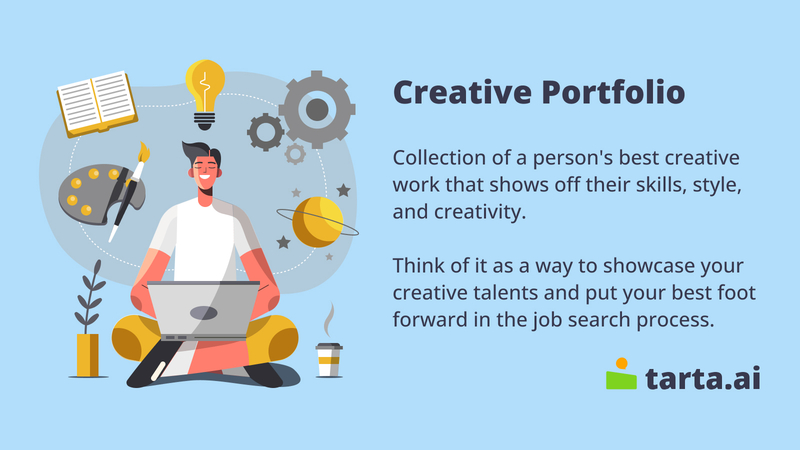The Importance of a Creative Portfolio: Showcasing Your Skills to Potential Employers
A creative portfolio is a crucial tool in the creative industry, as it showcases a candidate's skills, creativity, and unique style to potential employers or clients. A well-crafted portfolio can make a strong first impression, demonstrate a candidate's capabilities and achievements, set them apart from other candidates, and demonstrate their fit for a specific role. To create a strong portfolio, candidates should prioritize quality over quantity, showcase a range of skills, demonstrate their unique style and vision, and ensure their portfolio is visually appealing and easy to navigate. Tailoring the portfolio to the job requirements, emphasizing relevant experience and skills, and aligning it with the employer's values and goals can increase the chances of landing the desired job or project. A creative portfolio is an essential tool for any artist or designer, and it should reflect their professionalism, attention to detail, and potential for growth and development.

Showcasing Your Skills
A creative portfolio is a tool for showcasing your skills to potential employers. It allows you to highlight your best work and demonstrate your range of skills in your chosen creative field. Here are some tips on how to showcase your skills effectively in your portfolio:
- Highlighting your best work:
- Choose your strongest pieces of work to showcase in your portfolio.
- Include work that demonstrates your range of skills, but prioritize quality over quantity.
- Ensure that the work you choose is relevant to the position you are applying for.
- Demonstrating your range of skills:
- Include work samples that demonstrate a range of skills and techniques.
- Showcase work that demonstrates both technical and creative abilities.
- Include projects that demonstrate your ability to work on a variety of projects, such as individual and team projects.
- Exhibiting your unique style and vision:
- Showcase your unique style and creative vision through your work samples.
- Highlight your strengths and what sets you apart from other candidates.
- Make sure your portfolio reflects your personal brand and style.
Fact:
According to a study by The Creative Group, 76% of advertising and marketing executives believe that a creative portfolio is more important than a resume when it comes to evaluating job candidates
A strong creative portfolio should showcase your best work, demonstrate your range of skills, and exhibit your unique style and vision. This will help potential employers understand what you are capable of and what you can bring to their team.
Making a Strong First Impression
In addition to showcasing your skills, a creative portfolio should also make a strong first impression on potential employers. Here are some tips on how to make your portfolio stand out:
- Attracting potential employers with a well-crafted portfolio:
- Choose a visually appealing design that showcases your work in a clear and organized manner.
- Ensure that your portfolio is easy to navigate and includes relevant information about your experience, skills, and education.
- Consider including a summary or introduction that highlights your unique selling points and what you can bring to the position.
- Showing professionalism through presentation:
- Ensure that your portfolio is free of errors, typos, and inconsistencies.
- Use high-quality images and ensure that they are properly formatted and sized.
- Consider including a well-written cover letter that accompanies your portfolio and provides additional context for your work.
- Establishing credibility and expertise:
- Include work samples that demonstrate your expertise in your chosen creative field.
- Ensure that your portfolio reflects your professionalism and attention to detail.
- Consider including references or testimonials from previous clients or employers to add credibility to your portfolio.
A well-crafted creative portfolio can make a strong first impression on potential employers by showcasing your skills, demonstrating professionalism, and establishing credibility and expertise. This can increase your chances of landing your dream job in the creative industry.
Standing Out in a Competitive Industry
The creative industry is highly competitive, and it can be challenging to stand out among other candidates. Here are some ways to make your portfolio stand out and demonstrate your potential:
- Setting yourself apart from other candidates:
- Showcase your unique style and approach to your work.
- Include work samples that demonstrate your versatility and ability to work on different types of projects.
- Highlight any awards, recognition, or accomplishments that set you apart from other candidates.
- Providing evidence of your capabilities and achievements:
- Include work samples that demonstrate your skills and expertise in your chosen field.
- Include metrics or data that demonstrate the impact of your work.
- Showcase any positive feedback or testimonials from clients or employers.
- Demonstrating your potential for growth and development:
- Include work samples that demonstrate your willingness to take on new challenges and learn new skills.
- Highlight any professional development or training that you have undertaken.
- Show how you have evolved and improved your skills over time.
Tip:
A portfolio is not limited to just showcasing previous work experience but can also include personal projects, case studies, and other creative endeavors that demonstrate a candidate's skills and abilities.
A creative portfolio can help you stand out in a competitive industry by showcasing your unique style and approach, providing evidence of your capabilities and achievements, and demonstrating your potential for growth and development. This can make you a more attractive candidate to potential employers and increase your chances of landing a job in the creative industry.
Demonstrating Your Fit for a Specific Role
One way to make your portfolio stand out to potential employers is by demonstrating how you are a good fit for a specific role. Here are some ways to tailor your portfolio to a specific job:
- Tailoring your portfolio to the job requirements:
- Research the job description and requirements carefully.
- Select work samples that demonstrate your skills and experience relevant to the position.
- Consider adding work samples that showcase any specialized skills or knowledge required for the job.
- Emphasizing relevant experience and skills:
- Highlight any work experience that is relevant to the position.
- Include work samples that demonstrate your ability to perform the tasks required for the job.
- Showcase any transferable skills that can be applied to the position.
- Aligning your portfolio with the employer's values and goals:
- Research the company and its values.
- Consider including work samples that align with the company's values and goals.
- Show how your skills and experience can contribute to the company's success.
Tailoring your portfolio to a specific job can help demonstrate your fit for the role and increase your chances of landing the job. This involves researching the job requirements, emphasizing relevant experience and skills, and aligning your portfolio with the employer's values and goals.
Which Jobs Require a Creative Portfolio
In the creative industry, having a strong creative portfolio is often more important than having a traditional resume or CV. Employers and clients want to see evidence of a candidate's creativity, talent, and skill, and a portfolio provides a tangible way to demonstrate these qualities.
For artists and designers, a creative portfolio might showcase examples of their artwork or design work, including sketches, drawings, digital designs, or completed projects. Photographers might include a collection of their best photos, while filmmakers might include samples of their films or video projects. Writers might include samples of their published works, while musicians might include recordings of their music.

Photo: Microsoft 365/Unsplash
In conclusion, a creative portfolio is a powerful tool for showcasing your skills, making a strong first impression, standing out in a competitive industry, and demonstrating your fit for a specific job. By highlighting your best work, demonstrating your range of skills, exhibiting your unique style and vision, and tailoring your portfolio to the job requirements, you can increase your chances of landing your dream job in the creative industry.
Remember to pay attention to the presentation, ensure professionalism, and emphasize your achievements and potential for growth. A well-crafted creative portfolio can help you differentiate yourself from other candidates and demonstrate your value to potential employers.
FAQ
What should I include in my creative portfolio?
Your creative portfolio should showcase your best work and demonstrate your skills and creativity. Depending on your profession, this might include artwork, design work, photographs, writing samples, music recordings, or film and video projects. You might also include personal projects, case studies, or other examples that highlight your skills and expertise.
How should I present my creative portfolio?
There are many ways to present a creative portfolio, including a physical portfolio, a digital portfolio, or a combination of both. A physical portfolio might include printed pieces, such as artwork or photography, while a digital portfolio might be hosted on a website or shared through a cloud-based service. Whatever format you choose, be sure to present your work in a clear, organized, and professional manner.
How important is a creative portfolio in the job search process?
A creative portfolio is often more important than a traditional resume or CV in the creative industry. Employers and clients want to see evidence of a candidate's creativity and talent, and a portfolio provides a tangible way to demonstrate these qualities. Having a strong creative portfolio can make a significant difference in the job search process and increase your chances of landing a job or project.
How often should I update my creative portfolio?
It's a good idea to update your creative portfolio regularly, especially if you've completed new projects or gained new skills. Aim to update your portfolio at least once a year or whenever you have significant new work to showcase. Keeping your portfolio up-to-date ensures that potential employers or clients see your most recent and relevant work.